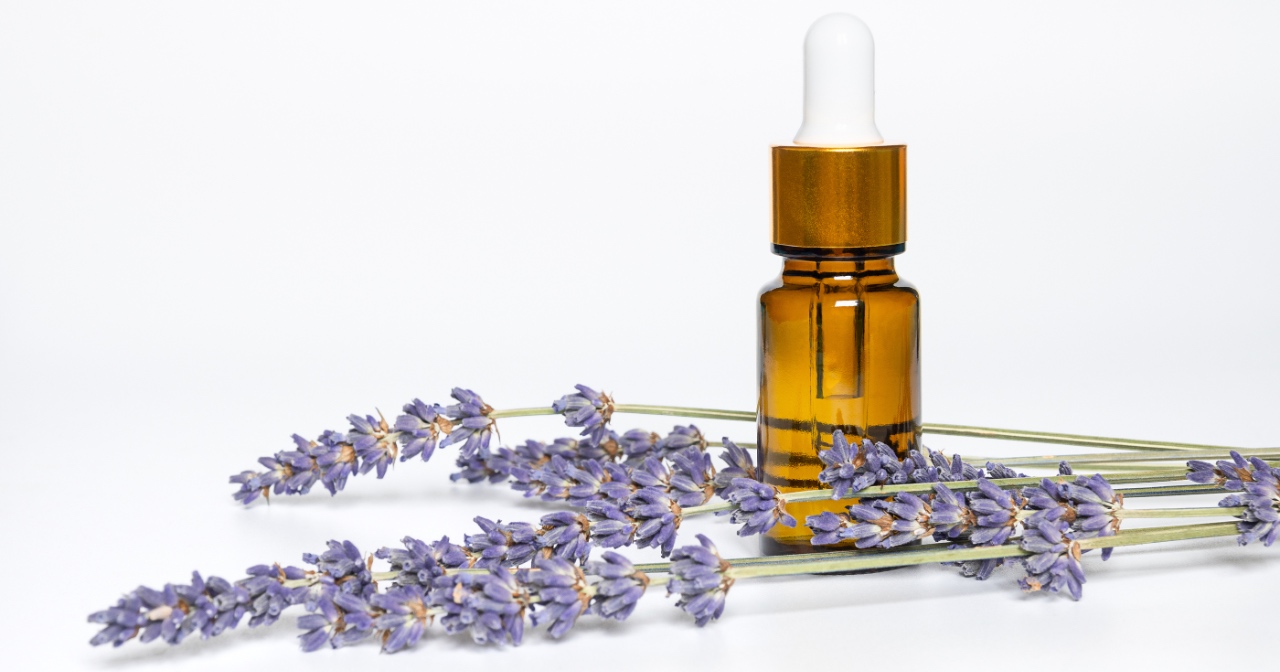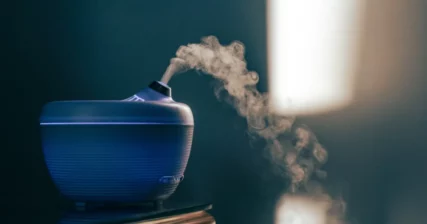Listen on: Apple Podcasts | Spotify
Is lavender essential oil helpful for anxiety or depression? If so, which is the best way to take it? How much should you use?
I’ll address these questions and others right here.
Lavender essential oil has been used for thousands of years, in part, to deal with feelings of anxiety, depression, and other factors affecting mental wellbeing. As we’ve progressed into modern times, it seems more and more people suffer from anxiety or depression, or both.
Research suggests 10% of the population faces an anxiety disorder in a given year. It’s the most common mental health-related cause of death in the United States. Heart disease is the most common physical health-related cause.
Most people who suffer anxiety also deal with some form of depression, sleep disturbance, or substance abuse.
Over the past decade, researchers have completed a significant amount of lavender-related research, which supports the way traditional medicine practitioners have used it for centuries. A new meta-analysis adds additional scientific evidence to the case for lavender as an anti-anxiety natural health solution.
What is anxiety?
Quoting the U.S. National Library of Medicine,
Anxiety is a feeling of fear, dread, and uneasiness. It might cause you to sweat, feel restless and tense, and have a rapid heartbeat. It can be a normal reaction to stress. For example, you might feel anxious when faced with a difficult problem at work, before taking a test, or before making an important decision. It can help you to cope. The anxiety may give you a boost of energy or help you focus. But for people with anxiety disorders, the fear is not temporary and can be overwhelming.
U.S. National Library of Medicine
Genetics, environment, trauma, and stress contribute to anxiety. As I explained in a recent blog post, COVID-19 infections and vaccines cause anxiety and depression in some people, likely as a result of dysfunction in serotonin and dopamine production.
Though nobody would want to live with untreated anxiety or depression, many prescription medications cause a variety of side effects. Anti-anxiety medication side effects include:
- Amnesia
- Delayed time to affect symptoms
- Delirium
- Dependency
- Depression
- Impaired concentration
- Sedation
- Withdrawal syndrome
That’s not to say they should be avoided, but it’s important to make an informed decision. Because anti-anxiety medications vary in how they affect a patient’s physiology, and anxiety has different physiological causes, it may take considerable trial and error to find one that works. So, it’s little surprise that researchers continue to search for natural ways of managing anxiety and depression and improving mental health.
One option is the use of essential oils, and lavender has been the poster-child for essential oils that help calm the mind and reduce symptoms of depression and anxiety. Unfortunately, mainstream news and big pharma often try to discredit the use of any natural health products, including essential oils.
Lavender Essential Oil Constituents and Usage
Lavender essential oil comes from the flowers and stalk, and contains more than 160 compounds. The oil is acquired through steam distillation. Though there’s some variability in the constituents, if the lavender is grown in the right environment, and harvested and distilled properly, it will be rich in therapeutic compounds.
That said, if you distilled a lavender house plant, you probably wouldn’t get much benefit from it.
High-quality lavender essential oil is rich in:
- linlool
- linalyl acetate
- 1,8-cineole b-ocimene
- terpinen-4-ol
- camphor
In Germany, doctors often prescribe a lavender-based drug called Silexan®, which contains standardized concentrations of linalool and linalyl acetate at 36.8% and 34.2% concentrations, but the remaining 29% varies in the concentrations of other compounds. I wanted to call this out as some lavender essential oil research uses Silexan, whereas most of the research uses regular, high-quality lavender essential oil.
Lavender essential oil is a common treatment for alternative medicine doctors. You can use lavender essential oil by inhaling it, taking it internally, or applying it topically. Research suggests that lavender essential oil is effective for anxiety with all three delivery methods.
However, the duration of their effects is different. It seems that internal use takes longer to experience a change, but also lasts longer, whereas inhalation has almost immediate effects, but those effects begin to fade faster.
For those using lavender as a complementary treatment for anxiety, both inhalation and internal use may be the most effective. Of course, a patient needs to work with their doctor to determine what’s appropriate for their individual needs.
In terms of dosage, patients take Silexan at doses of 80 mg internally, once or twice per day, which would be the equivalent of 2 drops of high-quality lavender essential oil per 80 mg dose.
When inhaling lavender, one to two drops is enough if inhaling directly from your palm or if you use a cotton swab as many researchers do. However, if you use a diffuser, you’ll want to use many more drops as the constituents will quickly get diffused across a much greater space. The size of the room you diffuse them in determines the number of drops you’ll need.
When using lavender essential oil, there isn’t yet an “ideal” amount. You may need 6-10 drops of lavender when using in a diffuser for inhalation, but only 1-2 if inhaling out of your hand. For topical use, you may benefit from 2-6 drops combined with a carrier oil, and when taking internally, you might need 1 or could benefit from 10.
For those who are used to following specific dosage recommendations from dietary supplements, the vagueness of essential oil recommendations might trigger its own case of anxiety. But like most other things in life, the more you use them, the easier it becomes to understand what works best for you.
Read also: Which essential oils help with headaches?
Lavender and Anxiety Research
Researchers have studied lavender for numerous health benefits. As one paper stated:
Essential oil (EO) of lavender (LEO; Lavandula angustifolia) is purported to be antibacterial, antifungal, anxiolytic, antidepressant, analgesic, carminative (smooth-muscle relaxant), as well as to have beneficial immunomodulatory effects on wound healing.
Malcolm BJ, et al.
You won’t see the terms above listed on a bottle of essential oils at the store. That would go against FDA regulations, which only allow structure/function claims on natural health product labels, whereas the terms above would be considered drug claims.
It is often used to alleviate anxiety before and during surgeries as well.
Some evidence suggests lavender essential oil could be combined with CBD or cannabis to enhance the effects of the phytocannabinoids, but most of the evidence is anecdotal yet.
Essential oils have significant effects on the body, including the brain, due to their size. They’re so small that they can pass through the blood-brain barrier and easily cross cell membranes. When inhaled, they quickly impact mood, emotions and other cognitive functions by stimulating the olfactory nerves. They can also be applied topically and pass through the skin or taken internally like other dietary supplements.
When it come to research on the inhalation of essential oils, researchers often discredit the quality of the studies because of difficulty in creating a randomized, controlled study setting. When you inhale lavender, you know it’s lavender, which makes it difficult to compare a control group against a treatment group. There’s no way to account for the placebo effect.
However, you can’t argue with the compelling research that supports lavender’s use. The existing body of research overwhelmingly supports lavender’s effect in calming the mind and alleviating symptoms of anxiety. Studies show it has similar effects when inhaled, applied topically, or taken internally, though inhalation combined with internal use may be the most effective.
Even in light of that criticism, research on inhaled lavender essential oil is impressive and extensive.
The authors of one meta-analysis stated:
Lavender aromatherapy showed substantial effect in reducing anxiety and depression, and sessions of administration increased the anxiolytic effects.
Kim M, et al.
And in another paper, researchers declared:
lavender essential oil inhalation could be used as an integrative treatment for chronic care of anxiety, or by itself as an acute treatment for those situations associated with mild levels of anxiety, or as a help in situational anxiety.
Donelli D, et al.
Read also: How to Use Critical Thinking with Essential Oils Cynics.
Integrating Lavender into Your Lifestyle
You don’t need to suffer from anxiety to benefit from lavender essential oil. It helps promote better quality sleep, enhances wound healing, and has even been shown to improve feelings of trust between strangers during a business deal.
But if you do suffer from anxiety, talk to your doctor about the idea of using lavender to complement your therapy. Research supports its use as a stand-alone option as well as something to use in combination with pharmaceuticals.
I’ll wrap it up with one more quote from another paper:
Inhalation of lavender oil, which is one of the most powerful anxiolytic essential oils, reduces peri-operative anxiety and can be prospectively considered in future studies for its potential sedative characteristics in patients undergoing surgical procedures under local anaesthesia.
Karan NB
References
Anxiety. National Library of Medicine, https://medlineplus.gov/anxiety.html. Accessed 24 Nov. 2021. Bandelow, Borwin, and Sophie Michaelis. “Epidemiology of Anxiety Disorders in the 21st Century.” Dialogues in Clinical Neuroscience, vol. 17, no. 3, Sept. 2015, pp. 327–35.
Donelli, Davide, et al. “Effects of Lavender on Anxiety: A Systematic Review and Meta-Analysis.” Phytomedicine, vol. 65, Dec. 2019, p. 153099. ScienceDirect, https://doi.org/10.1016/j.phymed.2019.153099.
Ferber, Sari Goldstein, et al. “The ‘Entourage Effect’: Terpenes Coupled with Cannabinoids for the Treatment of Mood Disorders and Anxiety Disorders.” Current Neuropharmacology, vol. 18, no. 2, Feb. 2020, pp. 87–96. PubMed Central, https://doi.org/10.2174/1570159X17666190903103923.
Global Prevalence of Anxiety Disorders: A Systematic Review and Meta-Regression | Psychological Medicine | Cambridge Core. https://www.cambridge.org/core/journals/psychological-medicine/article/abs/global-prevalence-of-anxiety-disorders-a-systematic-review-and-metaregression/484845CE01E709EE4FB6554AA78E612F. Accessed 23 Nov. 2021.
Karan, Nazife Begüm. “Influence of Lavender Oil Inhalation on Vital Signs and Anxiety: A Randomized Clinical Trial.” Physiology & Behavior, vol. 211, Nov. 2019, p. 112676. PubMed, https://doi.org/10.1016/j.physbeh.2019.112676.
Kessler, Ronald C., et al. “The Global Burden of Mental Disorders: An Update from the WHO World Mental Health (WMH) Surveys.” Epidemiologia E Psichiatria Sociale, vol. 18, no. 1, Mar. 2009, pp. 23–33. PubMed, https://doi.org/10.1017/s1121189x00001421.
Kim, Myoungsuk, et al. “Effects of Lavender on Anxiety, Depression and Physiologic Parameters: Systematic Review and Meta-Analysis.” Asian Nursing Research, Nov. 2021, p. S1976131721000773. DOI.org (Crossref), https://doi.org/10.1016/j.anr.2021.11.001.
Malcolm, Benjamin J., and Kimberly Tallian. “Essential Oil of Lavender in Anxiety Disorders: Ready for Prime Time?” The Mental Health Clinician, vol. 7, no. 4, Mar. 2018, pp. 147–55. PubMed Central, https://doi.org/10.9740/mhc.2017.07.147.
McLean, Carmen P., et al. “Gender Differences in Anxiety Disorders: Prevalence, Course of Illness, Comorbidity and Burden of Illness.” Journal of Psychiatric Research, vol. 45, no. 8, Aug. 2011, pp. 1027–35. PubMed, https://doi.org/10.1016/j.jpsychires.2011.03.006.
Sayed, Ahmed M., et al. “The Best Route of Administration of Lavender for Anxiety: A Systematic Review and Network Meta-Analysis.” General Hospital Psychiatry, vol. 64, June 2020, pp. 33–40. PubMed, https://doi.org/10.1016/j.genhosppsych.2020.02.001.
Schuwald, Anita M., et al. “Lavender Oil-Potent Anxiolytic Properties via Modulating Voltage Dependent Calcium Channels.” PloS One, vol. 8, no. 4, 2013, p. e59998. PubMed, https://doi.org/10.1371/journal.pone.0059998.
Stein, Dan J., et al. “Epidemiology of Anxiety Disorders: From Surveys to Nosology and Back.” Dialogues in Clinical Neuroscience, vol. 19, no. 2, June 2017, pp. 127–36.



